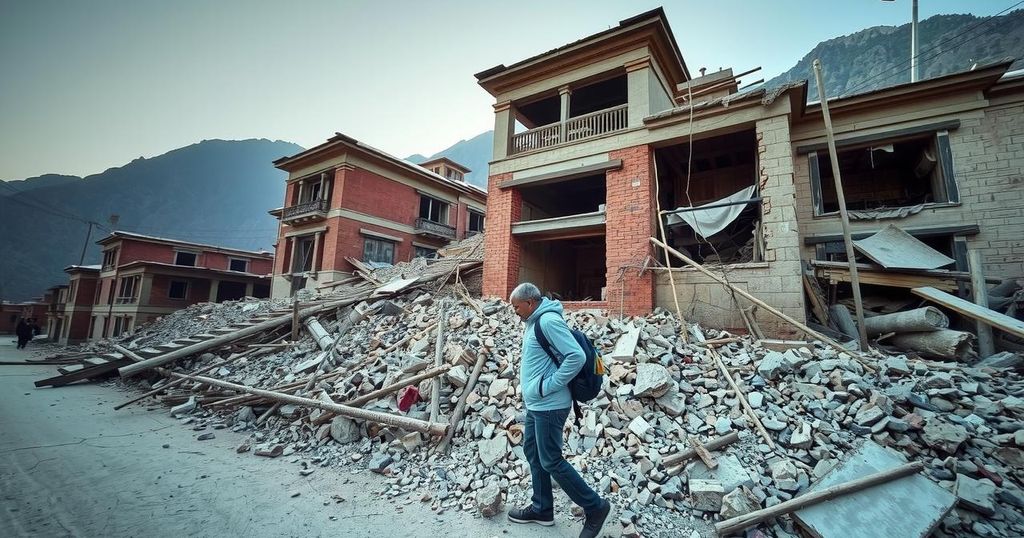Severe Earthquake in Tibet Results in Loss of Lives and Aftershocks

A 6.8-magnitude earthquake struck Tibet’s Dingri County, resulting in the deaths of 53 individuals and injuring 62 others. The People’s Liberation Army initiated immediate rescue operations, deploying drones and mobilizing medical teams. Aftershocks were reported in Nepal and India, urging evacuations yet with no casualties recorded. Authorities are actively monitoring the situation as the region responds to ongoing seismic activities.
A severe earthquake registering 6.8 on the Richter scale struck Dingri County in Xigaze, Tibet, at 9:05 AM, leading to significant devastation, including the tragic loss of 53 lives and leaving 62 individuals injured. As reported by state-managed media, the earthquake caused extensive structural damage, including the collapse of numerous buildings. The China Earthquake Networks Centre has identified the earthquake’s epicenter at coordinates 28.5°N and 87.45°E with a shallow depth of approximately 10 kilometers. In response to this disaster, the People’s Liberation Army Western Theater Command promptly activated emergency measures, deploying drones for reconnaissance and preparing troop transport, medical aircraft, helicopters, and ground units for immediate assistance.
In the aftermath of the quake, a series of aftershocks was recorded in the Xizang region, with magnitudes fluctuating between 4.3 and 5.0. These aftershocks impacted neighboring countries, including Nepal and India, particularly the capital city of Kathmandu and the Sheohar district in Bihar. Residents were compelled to evacuate for safety, although no casualties have been reported in these areas thus far. Authorities continue to monitor the situation closely in anticipation of any further seismic activity that may occur.
Tibet, a region characterized by its rugged terrain and seismic activity, is no stranger to earthquakes due to its positioning within the tectonically active Himalayan belt. Past earthquakes have similarly wreaked havoc in the area, prompting the need for robust disaster preparedness and response strategies. Earthquake magnitudes, such as the 6.8 magnitude that occurred this time, often lead to severe consequences for local populations and infrastructure, necessitating swift governmental and military response for aid and rehabilitation efforts.
In conclusion, the recent 6.8-magnitude earthquake in Tibet has resulted in significant human and structural losses, highlighting the need for ongoing preparedness in earthquake-prone regions. The prompt response by military units and the evaluation of aftershock impacts in neighboring countries underscore an important need for coordinated disaster management efforts. As recovery progresses, the situation remains under close scrutiny to ensure the safety of affected populations and prevent further casualties.
Original Source: www.devdiscourse.com






